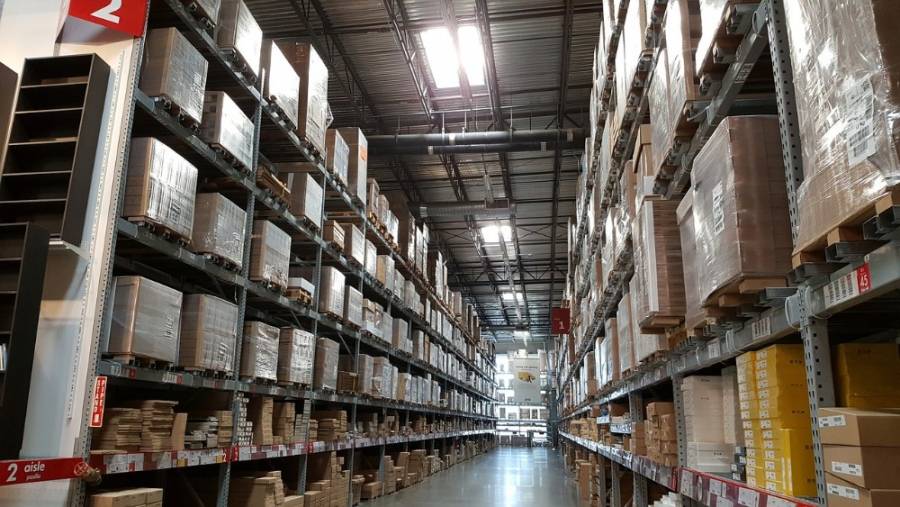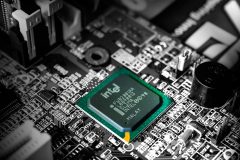The Internet of Things is growing, becoming part of nearly every industry in the world. Many people have IoT devices in their homes already — Amazon Echo, smart appliances, and similar devices. One place where IoT is surprisingly lacking is in the logistics and distribution industry. Is it time to implement IoT in the warehouse? What can supervisors and business owners do to implement this technology as part of their daily operations?
What Is IoT?
First, what is the Internet of Things? If you ask 10 IT professionals, you’ll get 10 different answers, but for the average user, the Internet of Things is a series of machines and equipment that can communicate with one another. They can gather information, receive information, send it out, or both. Your DVR, smart fridge, and Google Home are all IoT devices.
These devices are supposed to make your life easier. You can use a smart fridge to let you know when your food is about to spoil, or an Amazon Echo to play music or reorder something from Amazon. In the manufacturing industry, IoT takes these abilities to a whole new level.
Industrial IoT
Industrial IoT is making the lives of individuals in the manufacturing industry easier and more efficient than ever before. Pieces of a production chain can communicate with each other, streamlining the manufacturing process. While even IoT-enabled machines need maintenance, each part of the chain can monitor itself and the equipment around it through attached sensors, alerting maintenance staff to problems before they cause the machine to fail.
Supervisors and team members can monitor production in real time, through those same sensors, and catch any hiccups or problems with quality control before they make it through to the packing and shipping department.
While this sounds ideal for the manufacturing industry, how can IoT help those in logistics and distribution?
Types of Warehouse IoT
What kinds of IoT can we expect to see in warehouses in the future, as supervisors decide to adopt IoT in their facilities?
Autonomous picking robots are already starting to make their way into the industry. Amazon purchased robotics startup Kiva Systems in 2012, and since then, has deployed more than 30,000 picking bots in their distribution centers. Statistics show that 55% of your warehouse labor burden comes from picking. Collaborative robots, or cobots, like these will work alongside a human workforce, rather than replacing them to improve picking efficiency.
Autonomous vehicles are also making their way into warehouses, in the form of automatic guided vehicles or AGVs. Imagine a pallet jack that doesn’t require an operator. Instead, it can move to a specific location, pick up the pallet automatically and relocate it safely and efficiently, freeing up team members to complete other tasks. The programming of specialized AGVs could allow them to work with a variety of containers of different sizes and shapes to reduce the risk of lifting-related on-the-job injuries.
Warehouse management systems, either cloud-based or in-house, can be tied into an IoT system, allowing the computer to keep track of inventory location and movement in real time. From there, a supervisor or team leader can get a sense of the floor’s productivity and efficiency with a few keystrokes instead of spending hours reading reports.
Some of the industrial IoT applications could apply for use in warehouses as well. Any piece of machinery in the warehouse, equipped with those same sensors we mentioned a moment ago, could monitor its health and alert maintenance staff if there’s a problem. Attaching RFID sensors to inventory could allow the IoT system to track inventory movements.
The possibilities are endless, so why haven’t logistics and distribution companies started adopting these new technologies?
Slow Adoption
There are a few hurdles that might stand in the way of IoT in the logistics and distribution industry. The largest of these is the cost of initial implementation. The equipment, training, and new crew necessary to add these new devices to a warehouse is expensive, to say the least, which might leave it out of reach for smaller logistics companies.
There is also the threat of micromanagement. While efficiency is critical in these settings, there’s a fine line between using technology to make the job more efficient and using it to micromanage the entire process.
Amazon earned the ire of its consumers when it released plans to make wearable trackers mandatory for its picking teams. The retail giant claimed they would only use these devices to collect information about productivity on the warehouse floor, but it’s a slippery slope. Collecting information could quickly turn into micromanagement, alienating employees and damaging efficiency. Some experts even called these devices an affront to workers’ rights.
Finally, there is the problem of system vulnerability. Any networked system is vulnerable to attack, which could put protected customer or client information at risk. Even if you keep your entire network in-house if someone accesses it from their home office, that opens a door for savvy hackers to slip inside. You should address this problem before introducing any new IoT technologies to a warehouse.
Benefits of IoT in the Warehouse
What are some of the potential benefits of implementing IoT in warehouses?
The first major benefit is in the form of inventory management. RFID or Bluetooth trackers can keep track of inventory in real time, from the moment it enters the warehouse to the moment it ships out. If something is running low, an IoT system can alert management, or in some cases, even place an order from a supplier on its own.
Efficiency is the most significant benefit of IoT in this setting. Mobile computers, connected to the warehouse management system, enable team members to complete their job from anywhere without having to return to a stationary computer, interrupting their workflow.
Using IoT in picking and packaging can help reduce mistakes, preventing orders from being shipped to the wrong customer. It can also cut theft-related losses, either in-house or in transit, by keeping a close digital eye on everything that comes in or out of the warehouse. That could be extremely beneficial for companies that work with high-dollar items like electronics or jewelry.
IoT can also make it easier to engage with customers. Since you’ve got an eagle-eye view of your inventory, you can integrate this information into your website. If a customer is interested in ordering a phone, for example, they’re more likely to make their purchase if they know there is one in stock, rather than placing the order and receiving a “your product is out of stock and back-ordered until (date)” email after they thought they had finalized their purchase.
Adopting IoT
How can managers and business owners start the process and get IoT set up in their facilities?
Start by getting everyone on board. This change is going to affect everyone, so you don’t want to start introducing major technology without informing everyone involved.
Next, start talking to some IoT experts. You won’t want to attempt this transition without assistance or advanced preparation. There are plenty of experts out there for you to choose from, so find someone who is compatible and aligned with your company’s culture and goals.
Make your changes slowly. If you try to do everything at once, and your system hasn’t perfectly synced, it could trigger a cascade failure and take your entire warehouse offline while you scramble to fix it. Implement one piece at a time, and once you’re sure that works, move on to the next part.
In the meantime, offer new training for your employees, and hire some IT and IoT experts to keep on staff to maintain the system once it’s in place.
Finally, make sure you maintain the system. Once you’ve had it installed, you can’t merely sit back and enjoy the fruits of your labor. Here is where your IT team comes in. The IoT devices may need some little tweaks or adjustments to make sure they’re operating at optimum levels.
Embracing Innovation Will Move the Industry Forward
Warehouses and the logistics industry as a whole have been slow to adopt the Internet of Things, but a change is coming. While these machines won’t ever entirely replace a human workforce, as more commerce becomes digital, these companies will need to adapt to keep up or get left behind as the world changes without them.










